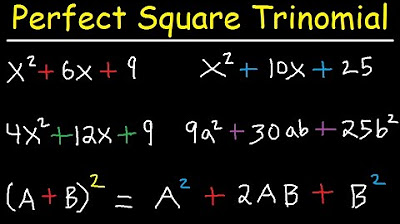What is half of 2 plus 2? The "correct" answer explained
Summary
TLDRThis video explores the viral puzzle of 'What is half of 2 + 2?' by examining two different interpretations. One interpretation leads to the answer 3, where 'half of 2' is evaluated first and then 2 is added. The other interpretation leads to 2, where the sum of 2 + 2 is calculated first, then halved. The speaker highlights how mathematical ambiguity often arises from context and that multiple answers can be valid. A poll of 48,000 people shows most favor the answer of 3. The video concludes by emphasizing that ambiguity is common in both puzzles and real-world mathematics.
Takeaways
- 😀 Half of 2 + 2 can be interpreted in two ways, leading to two potential answers: 2 or 3.
- 😀 The order of operations plays a key role in interpreting the expression, with multiplication taking precedence over addition in the first interpretation.
- 😀 One interpretation of the expression is 1/2 * 2 + 2, which results in 3.
- 😀 Another interpretation is 1/2 * (2 + 2), which simplifies to 2.
- 😀 The puzzle originates from the 1981 book '77 Stupendously Silly Practical Jokes You Can Play on Your Friends,' where both answers (2 and 3) are considered valid.
- 😀 Ambiguity in mathematical language can lead to different answers based on how the terms are understood.
- 😀 Many online tools, such as Google and Wolfram Alpha, interpret the expression as 1/2 * 2 + 2, providing an answer of 3.
- 😀 A poll of 48,000 people found that 74% of respondents believe the correct answer is 3.
- 😀 In mathematics, context is crucial, and the meaning of terms like 'half' or 'sum' can vary depending on how they are used.
- 😀 The debate over 'half of 2 + 2' highlights how even simple expressions can have multiple interpretations, showing the importance of clear communication in math.
Q & A
What is the main question that sparks the debate in the script?
-The main question is 'What is half of 2 + 2?' The ambiguity in how this question is read leads to two different interpretations and answers.
How does the presenter initially interpret the question 'half of 2 + 2'?
-The presenter initially interprets it as 'half of 2, then add 2'. This involves performing the multiplication first, with 1/2 * 2 = 1, followed by adding 2 to get 3.
What is the alternative interpretation of the expression 'half of 2 + 2'?
-The alternative interpretation is reading 'half of 2 + 2' as 'half of the sum of 2 + 2'. This means you first add 2 and 2 together to get 4, and then take half of 4, resulting in 2.
How does the question 'half of 2 + 2' relate to order of operations in mathematics?
-The order of operations dictates that multiplication comes before addition. In the first interpretation, multiplication is done first, yielding an answer of 3.
What does the source in Google Books suggest about the answer to the puzzle?
-The source, from the book *77 Stupendously Silly Practical Jokes You Can Play on Your Friends* (1981), suggests that both answers—2 and 3—are acceptable interpretations of the question.
What was the result of the poll conducted by the presenter regarding the puzzle?
-The poll revealed that 74% of respondents believed the answer to 'half of 2 + 2' was 3, indicating that most people interpreted the question as 'half of 2, plus 2'.
What is the presenter's stance on mathematical language and ambiguity?
-The presenter argues that ambiguity is present in mathematics, particularly in how expressions are interpreted. They highlight that mathematical language often depends on context and that mathematicians must make decisions about interpretation.
How does the presenter connect the puzzle to a broader concept in mathematics?
-The presenter connects the puzzle to the concept of interpreting mathematical terms and definitions in context, citing the example of 'linearity' in mathematics, where definitions can vary depending on the context.
What example does the presenter use to demonstrate ambiguity in mathematics?
-The presenter uses the concept of 'linearity' from mathematics as an example, pointing out that its definition can change depending on the context in which it is used.
What is the quote attributed to Charles Darwin mentioned in the video?
-The quote attributed to Charles Darwin is: 'A mathematician is a blind man in a dark room looking for a black cat that isn't there.' This quote is used to illustrate the perceived disconnect between abstract mathematical reasoning and the concrete world.
Outlines

このセクションは有料ユーザー限定です。 アクセスするには、アップグレードをお願いします。
今すぐアップグレードMindmap

このセクションは有料ユーザー限定です。 アクセスするには、アップグレードをお願いします。
今すぐアップグレードKeywords

このセクションは有料ユーザー限定です。 アクセスするには、アップグレードをお願いします。
今すぐアップグレードHighlights

このセクションは有料ユーザー限定です。 アクセスするには、アップグレードをお願いします。
今すぐアップグレードTranscripts

このセクションは有料ユーザー限定です。 アクセスするには、アップグレードをお願いします。
今すぐアップグレード関連動画をさらに表示

Circles and Angles (Outside, Inside, On)

LABORATORIO Joule e l'equivalente meccanico della caloria AMALDI ZANICHELLI

NEWPORT vs MANCHESTER UNITED Live with MARK GOLDBRIDGE

Fermions and Bosons

Factoring Perfect Square Trinomials

LLAMA 3.1 405b VS GROK-2 (Coding, Logic & Reasoning, Math) #llama3 #grok2 #local #opensource #grok-2
5.0 / 5 (0 votes)
